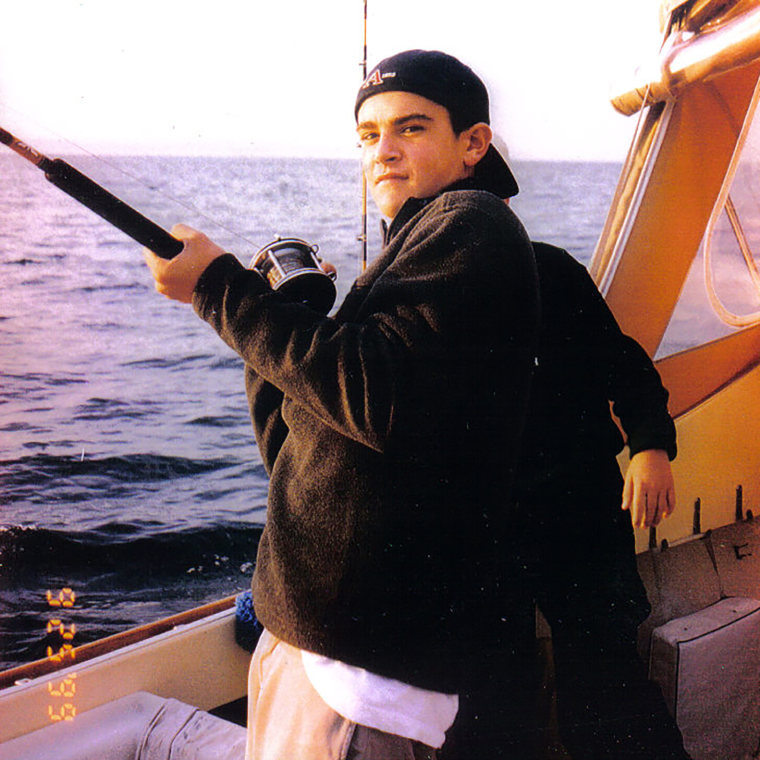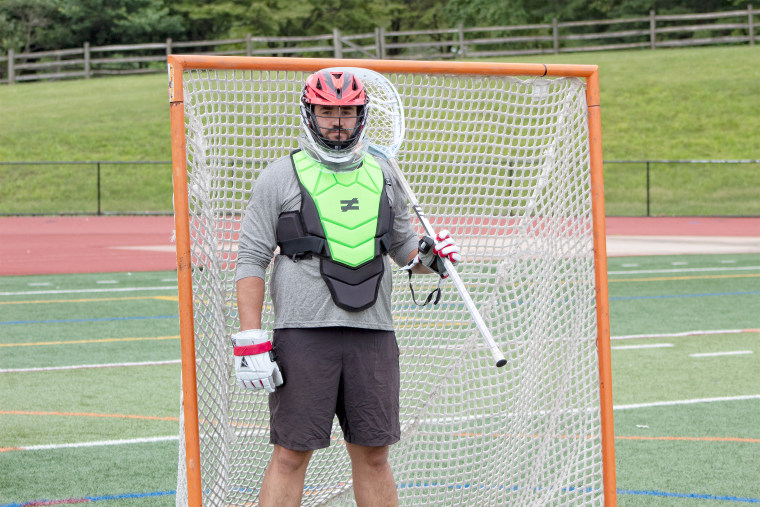[ad_1]
Sports medicine specialist Dr. Kody Moffatt knows how seeing Damar Hamlin collapse in cardiac arrest on “Monday Night Football” has frightened parents of young athletes.
“Almost every family that I’ve seen in clinic since Tuesday morning has asked about this,” said Moffatt, division chief of sports medicine at Children’s Hospital & Medical Center in Omaha, Nebraska. “They were worried about chest impacts.”
Such life-threatening injuries are extremely rare, and though it now appears that the 24-year-old Buffalo Bills safety is recovering, the incident was a gut punch reminder of how quickly injuries can happen.
Doctors at the University of Cincinnati Medical Center haven’t announced what exactly caused Hamlin’s cardiac arrest — the sudden loss of heart function — but during a news briefing Thursday they didn’t rule out a phenomenon called commotio cordis.
Commotio cordis happens when a projectile — often a hockey puck or a baseball, for example — collides with a person’s chest, throwing the heart’s electrical system out of whack. The person goes into potentially deadly cardiac arrest.
Immediate CPR and an automated external defibrillator (AED) are critical in the moments that follow, and that is how Damar Hamlin survived, experts said.
“The rapid response is what saved this player’s life,” said Dr. William Roberts, a sports medicine specialist at the University of Minnesota.
Commotio cordis occurs less than a few dozen times a year in the U.S. Could chest protectors prevent the problem? With the pads costing up to $100 or more, are they worth it?
“When it’s your child, it’s not rare,” said Karen Acompora, board chair for Parent Heart Watch, a group that advocates for greater cardiac protections in youth sports.

Acompora’s son, Louis, was playing in his first high school lacrosse game on New York’s Long Island in 2000 when a blow to his chest resulted in commotio cordis. CPR was administered, but there were no AEDs on site.
Louis was only 14 when he died. His mother has been pushing for chest protection in youth sports ever since.
“I don’t understand why youth sports don’t jump all over safety before a problem” occurs, Acompora said.
It wasn’t until 2019 that the National Operating Committee on Standards for Athletic Equipment, developed standards for chest protectors.
In 2022, USA Lacrosse mandated that all youth lacrosse players wear chest protection.
Though doctors have not said whether Hamlin’s injury was indeed commotio cordis, Acompora is glad to see the condition getting national attention.
“I’m hoping with this latest incident that people will open their eyes and say, hmm, maybe we need to do something.”
There are mixed opinions about chest protection in youth sports.
A 2017 study led by Tufts Medical Center in Boston found that chest protectors, specifically ones that incorporate Kevlar, may “be effective in the prevention of commotio cordis on the playing field.”
Stephens, who was not involved in the Tufts study, explained that Kevlar works by spreading the energy of an impact, rather than allowing a projectile to focus all its force in one spot.
But the study was conducted using pigs, not humans. That’s not enough scientific evidence to back using chest protectors in youth sports, said Dr. Matthew Silvis, director of sports medicine at Penn State Health.
Silvis was concerned that a chest protector could give a false sense of security.
“What you wouldn’t want is someone who’s wearing a chest protector to think, well I’m protected from this injury, and now I can play a little bit more reckless,” Silvis said.
Until Monday night’s NFL game, Dr. Chad Stephens, an interventional pain and sports medicine specialist in private practice near Dallas, had encouraged chest pads only for high school sports such as baseball and lacrosse, in which commotio cordis is more common.

“I was not an advocate for players to have a chest pad for non-projectile sports,” Stephens said. “I wasn’t as convinced that something like that could happen” in football. This is making me rethink my whole stance.”
Rob Vito, chief executive officer and founder of Unequal Technologies said his phone has been ringing nonstop with calls from coaches, players and parents.
The company makes chest pads that include Kevlar, the same material used in bulletproof vests.
“We’re getting calls from soccer moms and baseball dads,” said Vito. “Every sport is reaching out.”
Can commotio cordis be prevented?
Instead of investing in chest protection equipment, Penn State Health’s Silvis advises coaches to teach their young players proper technique when faced with an oncoming ball or hockey puck.
Players should learn to turn their body as much as possible to the side in these cases, with the goal of avoiding a collision to the chest.
The best way to save kids from dying from cardiac arrest on the playing field is to make sure coaches and players know CPR, and to have quick access to AEDs, said the University of Minnesota’s Roberts.
“If we’re looking at the risk reduction of adding a chest plate, compared to the risk reduction of training everybody in hands-only CPR having an AED available at sites, it would fall heavily on CPR and AEDs in terms of lives saved,” said Roberts, who is affiliated with the National Academy of Sports Medicine.
Rather than parents buying a chest protector, “how do we make sure our coaches and people that are at these games are CPR trained?'” Silvis asked.
There was widespread agreement that AEDs are necessary at all sporting events — not only for players but also for coaches, parents, grandparents and others watching the games.
Despite a lack of data showing chest protectors always protect against commotio cordis, young athletes involved in baseball, hockey and lacrosse may want to consider them, Moffatt said.
“There’s little harm and certainly there could be significant benefit,” Moffatt said. “As a dad as well as a doctor, I like to do things to protect my kids.”
[ad_2]
Source link
